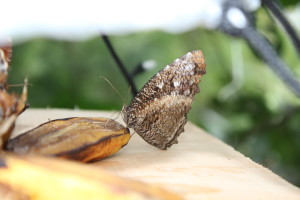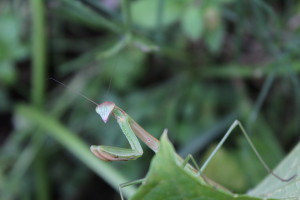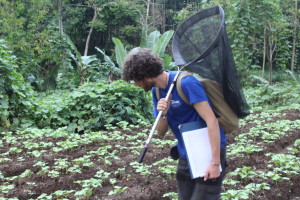Upon arrival in Cipaganti after a warm welcome and a warmer cup of tea, Dan (one of the volunteers) asked me if I wanted to join the team doing mist netting surveys of the local bat species. Happy to be thrown in the deep end and see what the forest has to offer in terms of fauna we made our way up to a small patch of bamboo 5 minutes from the village. The first thing that struck me was how noisy the forest is at dusk, and although the prayers from the Mosque do play their part it was the vast number of insects that lit up the area with their calls. Although we were largely surrounded by crops, which at home in the UK usually do very little for insect diversity, the impression of the biological diversity represented by the insects is impossible to be missed. The stridulation of grasshoppers and cicadas at night sometimes make small talk a burden, and during the day when you venture off of the beaten track (although this isn’t even necessary) emerald green praying mantises perch poised and ready for prey and huge birdwing butterflies soar between the foliage.


I have come to LFP to investigate the insect diversity here and look into the roles that they play both for the lorises and the ecology of the agroforest here. For the next two and a half months I will be conducting lots of surveys to measure the diversity of the invertebrates as well as trying to work out the insect pests that the farmers encounter. Additionally I will be trying to better understand how insect diversity and abundance effects loris behaviour and the foraging requirement that lorises may have regarding insect prey. During nightly behavioural observations that are being done here many a loris can be seen munching on insects, but the exact insect groups that they consume in the wild is still unclear. Once this has been resolved we can begin measuring how the insect prey abundance and behaviour may effect loris behaviour and movement.
To put this in context for loris conservation, in collaboration with Katie who is looking at the effect of climate on behaviour of lorises I will be trying to measure what effect altitude has on insect populations. In other words, if the lorises are moving to higher altitudes (due to habitat disturbance and increased temperatures at lower altitudes), will they have any insects to munch on?!?
Get the kettle on and get the net out, let’s find out!

- Albie Henry, LFP Researcher
